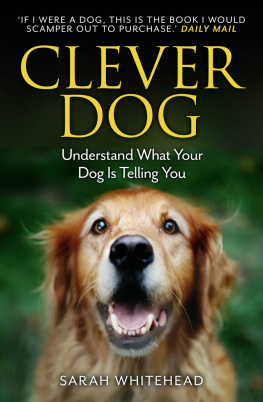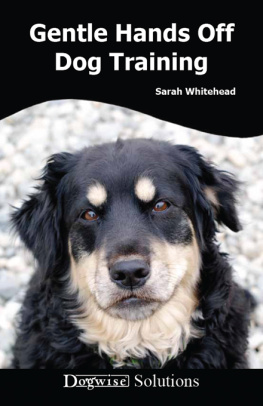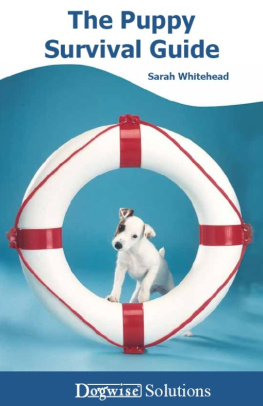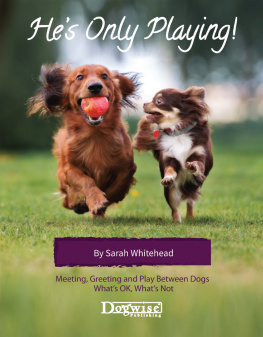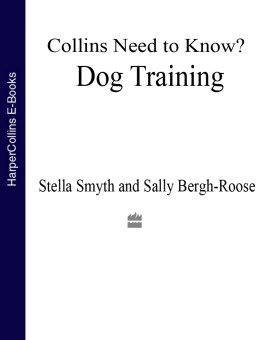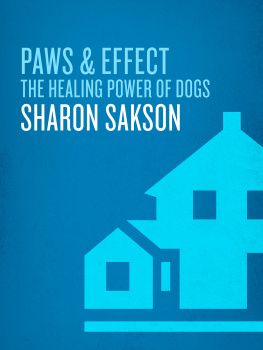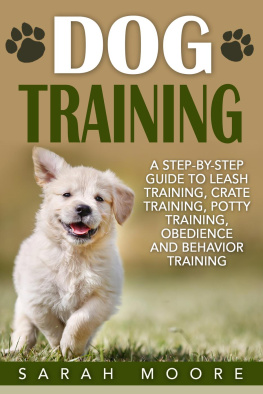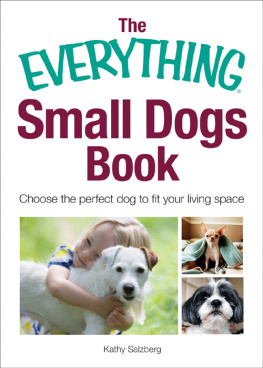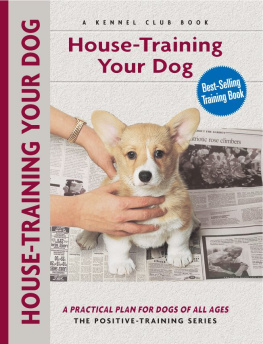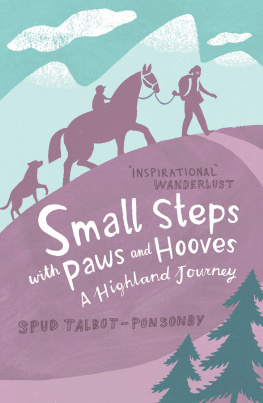Dogwise Solutions
Small Paws
Essential Behavior and Training Tips for Young Puppies and Small Dogs
Sarah Whitehead
Dogwise Publishing
A Division of Direct Book Service, Inc.
403 South Mission Street, Wenatchee Washington 98801
1-509-663-9115, 1-800-776-2665
Sarah Whitehead
ISBN: 978-1617812170
All rights reserved. No part of this book may be reproduced or transmitted in any form or by any means, electronic, digital or mechanical, including photocopying, recording or by any information storage or retrieval system without permission in writing from the publisher.
Limits of Liability and Disclaimer of Warranty:
The author and publisher shall not be liable in the event of incidental or consequential damages in connection with, or arising out of, the furnishing, performance, or use of the instructions and suggestions contained in this book.
Printed in the U.S.A.
Sarah Whitehead, BA(Hons), MSc, CCAB

Sarah is a full member of the APBC, (Association of Pet Behaviour Counsellors) and the APDT (Association of Pet Dog Trainers, UK), as well as being a Certified Clinical Animal Behaviorist (CCAB), specializing in aggression problems in dogs, canine body language and positive training methods.
Sarah is the author of more than 25 books, booklets and DVDs, and is a frequent media contributor, appearing on TV, radio and the net. She has helped thousands of dogs (and cats!) to overcome behavior and training problems and is Managing Director of Think Dog! Ltdan organization offering accredited and practical education courses in training and behavior.
Sarah lives in Windsor, Berkshire, UK and has three wonderful dogs of her ownall mix breeds from rescue, including Mouse the Chihuahua. She also has two huge Maine Coon cats!
Contents
As a behavior specialist and positive dog trainer, I love all dogs, and I have been lucky enough to train and help thousands of owners and dogs over the past 25 yearsof all different breeds and types.
I have a particular fondness for tiny dogs. Jackson started the love affair. A Chihuahua-cross-Jack Russell, he came to me from the RSPCA, and despite his diminutive size and his poor start in life before I got him, he was brim-full of personality and enough cheekiness to make me laugh every single day.
Jackson got me hooked. He was a hard act to follow, but his successoranother rescue Chihuahuahas now stolen my heart. At just over 5 pounds (2.4 kilos), Mouse is truly tiny. Hence her name!

Small dogs are not just big dogs in miniaturethey have some very specific training and behavioral needs. Ignoring these can result in behavioral problems and trauma for your little dog. Embracing and fulfilling them means you can enjoy a rich and happy life together.

COLLAR AND TAG
Put a collar and tag on your puppy so that you can be reunited just in case he gets out. Of course, he or she should also be microchipped, but a collar and tag is essential tooand visibly tells people that hes owned and loved.

A SAFE PLACE TO SLEEP
Little dogs love comfort and warmth, so make his own bed or indoor crate t for a little prince or princess! That way he wont need to opt for your bed instead.

THE GREAT ESCAPE
Keep your puppy on a long line in the garden unless you are absolutely sure that he cant escape. Tiny dogs can squeeze through tiny gaps in fencing and may hide if they become frightened.

SUPERVISE CHILDREN AND YOUR DOG AT ALL TIMES
This is for everyones safety. Pop your pup in the crate or behind the baby gate when you cant be attentivethis means even when you are on the phone.

KEEP OUT OF REACH
Keep all human food, medicines, cosmetics and chemical out of reach. And this means out of reach even from a small dog who thinks the kitchen chairs and counters are a climbing frame.
This is critically important for small dogs because even a small amount of chocolate or raisins can be fatal, and just a nibble or lick of some human medicines or chemicals can be enough to do serious damage that wouldnt be so drastic in a much larger dog.

YOUR DOG NEEDS SPACE TOO
Make sure that your little dog can enjoy food and sleep uninterrupted. Pop extra food treats into his bowl rather than ever trying to take his food away and make sure that children leave him be when hes resting.
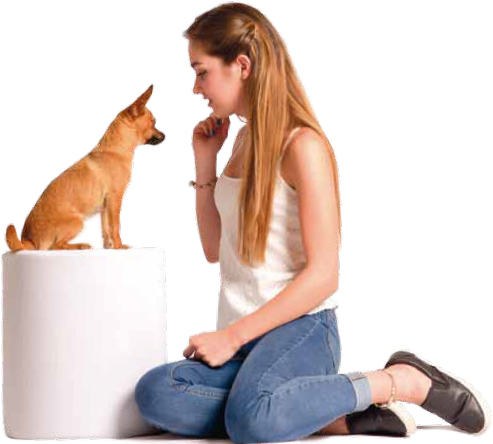

CONTAINTHE PUPPYTO ASPECIFICAREA
Many people nd that containing the pup to one room at the beginningreally helps with house training and supervision, particularly with children around. Small dogs can be trodden on if they are suddenly under your feet, and can slip out of the front door all too easily, so using a baby gate will help save your sanity! (Weave some cardboard or exible plastic between the bars of the baby gate if you need to close up the gaps.)

HARNESS FOR SAFETY AND COMFORT
While a collar is useful for bearing your dogs ID tag, a harness tends to be much safer and more comfortable for walking. These also prevent damage to the delicate throat and eyes of small breeds.
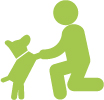
HANDLING
Teach your little dog to enjoy being handled and picked upmany of them are very touch sensitive and dont inherently like this, so they need to be taught that it can be pleasant.
House training can be a little tricky for some tiny dogsfor three main reasons...
The first is that small puppies inevitably have small bladders and digestive systemsmeaning that they need to go potty far more often than bigger puppies, and that they cant wait as long when they need to go, especially while they are still developing.


